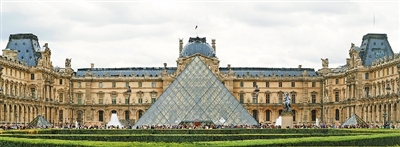
The Louvre is the world’s largest museum and houses one of the most impressive art collections in history. The magnificent, baroque-style palace and museum — Le Musée du Louvre in French — sits along the banks of the Seine River in Paris. It is one of the city’s biggest tourist attractions.
The Louvre was originally built as a fortress in 1190, but was reconstructed in the 16th century to serve as a royal palace. It continued to be expanded over the years. It currently covers a total area of 60,600 square meters.
The Louvre’s collection includes Egyptian antiques, ancient Greek and Roman sculptures, paintings by the Old Masters, and crown jewels and other artifacts from French nobles. Its works span 25 centuries from the sixth century B.C. to the 19th century A.D. More than 35,000 works are on display at any given time. The displays are divided into eight departments: Near Eastern Antiquities, Egyptian Antiquities, Greek, Etruscan and Roman Antiquities, Islamic Art, Sculptures, Decorative Arts, Paintings, and Prints and Drawings.
Without question, The Louvre’s most famous work is Leonardo da Vinci’s “Mona Lisa,” who enchants hordes of visitors with her enigmatic smile. This small, iconic painting — only 53 by 77 centimeters — is covered with bullet-proof glass and flanked by guards. It was stolen in 1911 and recovered in 1913.
Crowds also flock to see the armless beauty of the “Venus de Milo,” and “Winged Victory,” the ancient Greek sculpture also known as “Nike of Samothrace.” Other popular works include the “Code of Hammurabi,” da Vinci’s tragic sculpture “The Dying Slave,” Antonio Canova’s 18th-century sculpture “Psyche Revived by Cupid’s Kiss,” and Eugene Delacroix’s “Liberty Leading the People,” which depicts the bare-breasted Liberty goddess leading a charge in the French Revolution.
The Louvre is the second-most visited museum in the world — after China’s Palace Musuem — drawing nearly 10 million people each year.
(SD-Agencies)
Editor: Jane Chen